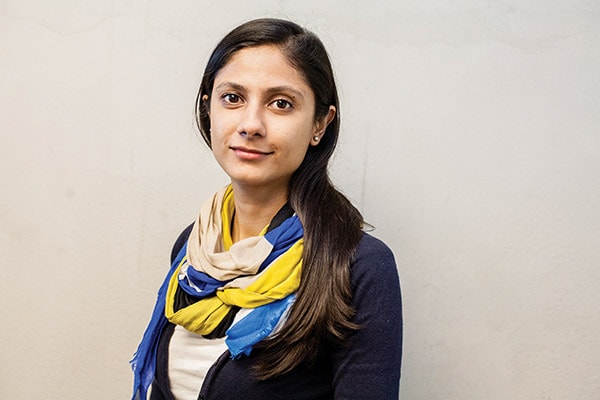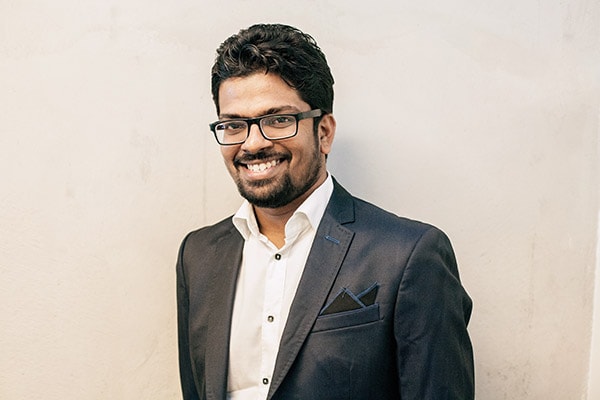
How Twitter changed its mind on India
In 2013, the microblogging site was tepid about the India opportunity. Things have changed. Today, the country is Twitter's fastest-growing market
The morning of September 24, 2014, was historic. India had woken up to the Mars Orbiter, developed by the venerable Indian Space Research Organisation (Isro), successfully entering the Red Planet. Little else mattered on that day. The buzz on news platforms was ceaseless. The flow of accolades was unstinting too. But even in all this noise, something broke through, delighting India’s digital natives. The Mars Orbiter exchanged ‘Howdy?’ tweets with Mars Curiosity (Nasa’s child that had entered the planet on August 5, 2012) and said it would “be around”.
That tweet stormed India’s cyberspace, became what Twitter India calls “an interstellar hit”, was retweeted more than 12,500 times, and remains one of the highest shared tweets from India. It was incredible that two robots could talk to each other in full public view. And the fact that serious-minded, grey-haired scientists at a distant, government organisation were capable of enabling such edgy, compelling stuff was astounding.
“But none of it was an accident,” as Twitter India chief Rishi Jaitly would have you believe now. “We had been working with Isro for a long time and readying for an opportunity to engage and capture the imaginations of young Indians on Twitter. The idea of Twitter bringing Nasa and Isro together and letting the folks at Nasa know that Orbiter is interested in talking to Curiosity was inevitable,” he says.
Isro is just one of the many government-operated entities that have warmed up to the micro-blogging platform. Led by a social media-savvy prime minister, who got his entourage of ministers (and ministries) on the network within days of taking charge at South Block, the new Indian government is “a great opportunity for the company”, says Jaitly, 32, Twitter India’s first recruit in November 2012. (Six people have joined him since.)
And his claim is substantiated. The Prime Minister’s Office (@PMOIndia) is the fastest-growing Twitter account in India (see table on left) with a 61 percent spike in following in 2014. Among the other government accounts that have notched sizeable followings are the Ministries of Railways, Health and Family Welfare, Textiles and Finance. “PM Modi has taken Twitter diplomacy to a different level,” says Jaitly. After exchanging policy tweets with Japan PM Shinzo Abe and even tweeting in Japanese during his official visit to the country, on November 21, Modi announced via a tweet that US President Barack Obama would be the chief guest on Republic Day. It was the first official announcement about the event.
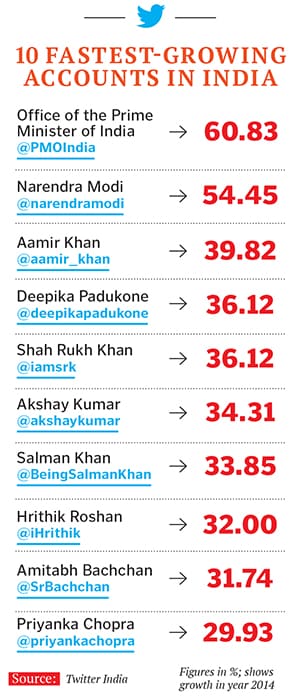
India is among Twitter’s top 10 markets today, says the company, and is the fastest-growing from the audience standpoint. According to a May report by market research firm eMarketer, India accounts for the third-largest user base on Twitter, and has surpassed UK this year. The fact that China (another country with a huge internet user base like India’s) has banned Twitter in favour of its homegrown social network Sina Weibo makes India all the more essential. But on the revenue front, India is yet to account for anything substantial. “Our global mission here is [user] growth, growth, growth,” says Jaitly. “The opportunity to create other kinds of value in India will come, but today it is nothing but to delight users and delight people who are in the business of delighting the audience.”
What is different now is that Twitter, at a global level, is excited about the Indian opportunity that extends to more than a billion people and nearly a billion mobile phones. That, too, is a shift in outlook from a year ago when the company had highlighted its challenges in a primarily feature phone market like India. Twitter CEO Dick Costolo said in July that India will be a “vital business market” in the next five years and will see more and more investment from the company as advertiser interest picks up here.
Jaitly, Costolo’s commander-in-chief in India, outlines the company strategy. “Some people enter a market to drive global efficiency; some enter to do product innovation. We haven’t entered India to do something somewhere else. Our entry here is to serve Indian users and Indian partners. We have been obsessive about them,” he says. Twitter’s mission to “reach every Indian with a mobile phone”—smart or feature—is in line with Costolo’s global focus on mobile devices. While that is still a few years away, considering Twitter’s India user base is at 18.1 million (according to eMarketer; Twitter doesn’t share country-specific numbers), that is six times less than rival Facebook’s 112 million, a start in the right direction has surely been made.
Cometh the Hour
Twitter’s rise in India has largely been event-driven—the 26/11 terror attacks, India’s victory in the 2011 World Cup, rise of the Aam Aadmi Party and the Delhi state elections, the December 2012 gang rape protests, and superstar Rajinikanth joining the microblogging site, among others. These are what the company calls “checkpoints” in its India journey.
But the biggest splash happened a year ago, one that created new usage records. Thousands of Indians set up Twitter accounts to just be able to participate in the event.
In November 2013, Twitter launched its India blog (one of the seven country-specific blogs it runs) coinciding with Sachin Tendulkar’s last cricket series and retirement—an occasion that dominated public consciousness. It announced a unique initiative with the Board of Control for Cricket in India (BCCI) wherein users could tweet an appreciative message with the hashtag #ThankYouSachin and get a personalised digital autograph from Tendulkar.
The germination of this campaign happened in the numerous brainstorming sessions between the BCCI and Twitter. “We chose Twitter because it has changed the way our fans, here and around the world, stay connected to our sport and its personalities,” says BCCI Secretary Sanjay Patel.
The #ThankYouSachin campaign was a roaring success. Three million tweets were sent to the BCCI’s official handle. There was a tweet every six seconds during match days (two Test matches between India and West Indies). “What overwhelmed us all the more was the presence of some highly acclaimed and successful sportspersons on the list of people who took part in this campaign. Champion sportsmen like Roger Federer, Lewis Hamilton and MS Dhoni tweeted using #ThankYouSachin,” says Patel.
And Twitter played the proud enabler. “There’s always greater engagement during events and Sachin’s retirement was an incredible example of how sporting emotions are outpoured on Twitter,” says Aneesh Madani, head of sports, Twitter India. “Technology was a trigger. And we made good use of the occasion.”
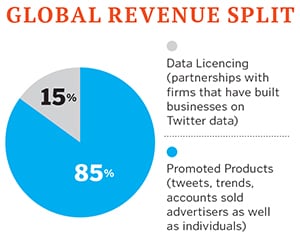
The platform eventually turned into a public square where politics-related conversations shot up by 600 percent between January and May 2014. From Modi announcing his candidacy to declaring his victory (the most retweeted tweet in India so far), more than 60 million tweets were exchanged around the elections, a national event.
Contrast that with the 2014 Sochi Olympics, a global event, that recorded 40 million tweets. And the enormity of what the world calls India’s first #TwitterElection is clear. Raheel Khursheed, head – news, politics and government, Twitter India, says, “During the 2009 elections, only one politician was tweeting—Shashi Tharoor. Cut to 2014, and Twitter had actually turned into the hub of election-related conversation. It had a huge impact on public psyche.”
The act of evangelising news and government bodies started in late-2012 for Jaitly, a few months before Twitter India was incorporated in February 2013. “I was roaming the country from Delhi to Gandhinagar just letting people know that while you may be using Twitter, there are opportunities to invest with more ambition. And we both win if you do. I reached out to every national political party and emerging candidate personally,” he says.
There was a significant shift in India’s digital universe from 2009 when Jaitly, then leading public-private partnerships at Google India, had gone about coercing political parties to start a website. “During the Advani-Manmohan election, I was sitting with parties and making presentations about the importance of the web because, at that time, the internet was being critiqued quite aggressively in India. But in the Modi-Manmohan election, I could walk into a room and make a pitch about Twitter. Parties had evolved and learnt to appreciate its power,” he says. Not surprising, then, that India today has one of the highest engagement rates with politics on Twitter. And political events lead to maximum peaks in Twitter conversations.
Prior to the Lok Sabha polls, Twitter India partnered with Bangalore-based ZipDial, one of the many tech startups feeding off the platform (see box on page 42), to help users dial into accounts and receive tweets as text messages. It was a strategy aimed at tapping into the vast feature-phone user base in India that is deprived of data connectivity, yet keen to tune into the Twitter talk. Millions of people (even from tier 3 and tier 4 towns) dialled into Modi’s account to receive his tweets as SMSes. “What we’re trying to tell people is that the reach and opportunity on Twitter is both logged in and logged out. We are helping them appreciate passive content consumption through Twitter,” says Jaitly.
That is one area where Twitter scores over its peers. The fact that one doesn’t need to have an account to be able to access Twitter content makes it easier for a chunk of the population. “Twitter may not be as advertiser-friendly as Facebook but it is more consumer-centric and open,” says Karthik Srinivasan, national lead, Social@Ogilvy. “And it is slowly turning itself into a service which possibly no one can miss.”
Though Twitter SMS is linked to only a handful of influential accounts (Modi, Amitabh Bachchan, Shah Rukh Khan, Sri Sri Ravi Shankar, MTV India, Times Now and Indian National Congress), it has gained enough traction already. “It is growing our audience in India irrespective of the mobile device they have. Absolute non-metros have responded to this. And we did not require any promotion. So it is an indication that if you meet users where their mobile behaviour is, they respond,” says Jaitly.
Some industry-watchers are circumspect. “Twitter SMS is a partially viable thing because if you start receiving 100 tweets as messages, it is problematic,” says Mahesh Murthy, venture capitalist and founder of digital analytics firm Pinstorm. “It works with some accounts and some events but not forever.”
Extending Brand Twitter
Twitter India is now working with ‘influencers’, and it acknowledges that in a celebrity-obsessed nation, filmstars, politicians and sports personalities have led to its rise in a way perhaps unseen in the rest of the world.
Jaitly shares an anecdote: “I got into a taxi in Bombay and asked the driver, ‘Have you heard of Twitter?’ He said, ‘Haan, wahan Amitabh Bachchan raat ko likhte hain.’ [Yes, that’s where Amitabh Bachchan writes every night.] I was stunned. What it told me was that as a company, I had to service Mr Bachchan. And that India is a culture that thrives on icons. When people like Mr Bachchan see value in our platform, users see value in our platform.” Incidentally, Bachchan’s is the most followed (12 million followers) Twitter account in India. And nine out of the top 10 Indian accounts happen to be that of Bollywood stars.
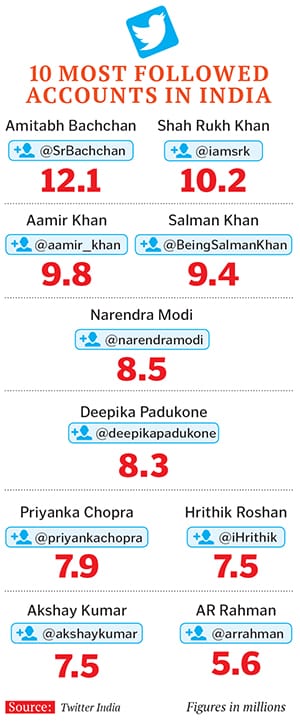
Twitter’s Promoted Products (promoted tweets, trends and accounts) rolled out in India over a year ago. Globally, a lion’s share (almost 85 percent) of its revenues comes from them. In India, though, promoted products have had a slow pick-up. “It could be because the entry barriers are high,” says Social@Ogilvy’s Srinivasan. “One has to spend about Rs 6 lakh to buy a promoted product on Twitter. Why should you when you can promote your content on Facebook for a few hundred rupees?”
Despite costs being prohibitive, more and more Indian brands are now waking up to the potential of Twitter advertising. It started with internet brands (usually early adopters of everything digital) such as Flipkart, Amazon India, OLX, Jabong, MakeMyTrip, Shaadi.com and Naukri.com; and has now extended to well-established non-internet companies such as Nissan India, Wipro, Cadbury Bournville, Star Sports, Smirnoff India, Vodafone India, Reliance Mobile, and even banks and financial institutions like Kotak Mahindra Bank, Axis Bank, Tata Capital and LIC.
So, what attracts brand marketers to Twitter?
The metrics of business are changing, believes Jaitly. “Marketers are caring more and more about the level of engagement and not just the size of the audience. Brand engagement is being measured. Public sentiment is a winning indicator of customer acquisition,” he says. Twitter is increasingly turning into a place to engage with brands. On digital, even a 1 percent click-rate is considered good. Twitter India claims it sees up to 20 percent click-rates. “That is crazy and stunning,” says Jaitly. “It makes us very bullish on our ad products.”
Ronita Mitra, senior vice president-brand communication & consumer insights, Vodafone India, says, “As a brand, we invest a lot of resources in creating slice-of-life stories and content around our followers’ passion points. Twitter is a natural platform for us to distribute these stories and drive higher engagement with our followers. We see Twitter advertising less as conventional advertising and more as a strategic placement of our stories into our followers’ timeline.”
More and more brands are now reaching out to Twitter India for interesting partnerships, says the company. Its global parent is well aware of this opportunity and is looking to “extend its advertising platform” here. “We have to prioritise, frankly. There are many marketers wanting to do many things on Twitter. We have hired a guy in Gurgaon whose job is to work with these brands and help them do focussed, aggressive advertising,” says Jaitly.
Pinstorm’s Murthy is bullish on Twitter’s potential as an advertising platform. “It has the potential to grow almost 3X from where it stands today,” he says. But Twitter has to speak to marketers in a language they understand. “Agencies still don’t know how to see the medium. Brands run ridiculous hashtags which no one could be bothered about. Facebook has succeeded because it has played on a mindset that the advertiser understands. Twitter has concentrated on usage rates, which is a smart strategy for now, but it has to think about advertisers soon,” says Murthy.
Also, points out Prasant Naidu, founder of Lighthouse Insights, an Indian social media tracker, “Twitter is a mobile-first company and the biggest challenge it faces in India is that it is not a smartphone market. Twitter’s advertising platform is ineffective on feature phones, which is what most Indians use still. The cost of Twitter advertising is also very high. Facebook and Google are more flexible for advertisers. And hence, a majority of the ad budgets are directed towards them.”
Naidu also believes that Twitter in India is still a “very journalist’s medium”. “Though the 2014 elections changed that considerably, with more and more Twitter integration on TV (the mass medium in India), it continues to be perceived as an intellectual platform. Facebook, on the other hand, has managed to become very, very mass,” he says.
One way in which Twitter is changing that is through the second screen model.
In Partnerships They Trust
Social TV, or second screen, has become second nature to Twitter users. This is where people live-tweet about the television programmes they are watching, sometimes managing to pull in new viewers, making TV-viewing a real-time group experience: The “second screen” (Twitter) serves as a natural ally and a “force-multiplier” for the first screen (TV).
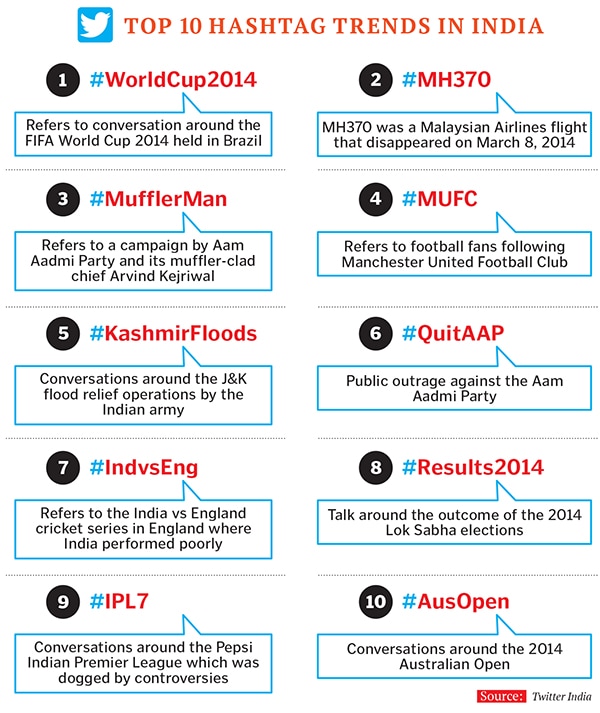
One of the shows that has been benefiting from Twitter buzz is Star TV’s Satyamev Jayate. According to data shared by Twitter India, there were 0.55 million tweets around the show between October and November 2014 (its run-time), which was a 300 percent increase over 2013. The show has been such a success on the medium that its makers decided to launch the first trailers of this season exclusively on Twitter. In addition, they introduced a component, #MumkinHai, where viewers got a chance to tweet their questions/comments to host Aamir Khan and get them addressed on national television.
“The TV roar is being heard on Twitter. The live component of Satyamev Jayate was a great example,” says Pratiksha Rao, partnerships manager, TV and entertainment at Twitter India. Some channels (Star World, for instance) are even creating videos for Twitter-only consumption. “Now content creators understand Twitter better and are innovating on their own. We are acting as enablers. We are in the audience business and the TV industry is in the audience business too. It is willing to put stuff out even if there is no revenue involved,” says Rao.
The Indian Premier League (IPL) is another high engagement-driver on Twitter and the BCCI has left no stone unturned in leveraging its impact. In IPL-7, it got its digital partner Pulselive (which is also a content partner of Twitter) to create social polls that were promoted during the live broadcast and encouraged fans to vote on issues or answer questions on the official IPL app, website or Twitter feed. The results were then aggregated and flashed on TV, which led to further debate and interaction. “There were 59 million tweets with the official hashtag of #IPL7. That is a 59 percent rise from last year,” says Twitter India’s Madani.
Wyndham Richardson, managing director, Pulselive, says, “Naturally, sport is incredibly emotive and fans want to contribute and feel passionate about expressing their views.” Unsurprising, then, that five of 2014’s top 10 trending topics in India were sports-related.
To extend its social TV role, Twitter launched Amplify in India in August in an exclusive partnership with Star Sports and Vodafone India. Twitter Amplify is a tool that allows a television content provider to maximise (amplify) its reach via Twitter. Says Jaitly, “It not only creates more real-time engagement with the user but also allows the channel to monetise its excess inventory.”
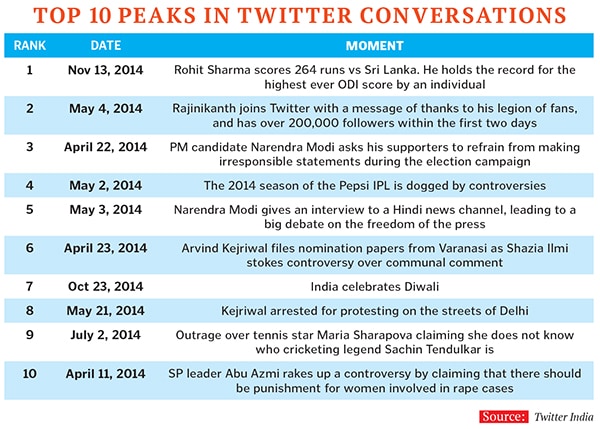
During the India-England cricket series (July–September), users could tweet to Star Sports asking for replay footage of match events, for instance of a certain boundary or a wicket. The channel would respond immediately with a video which also carried a 10-second Vodafone ad. “It is a win-win proposition for all. Vodafone gets associated with iconic content, Star gets video distribution, and we drive audience delight,” says Jaitly.
That, clearly, is Twitter’s priority right now. “Profitability isn’t Twitter’s concern even at the global level,” points out Naidu of Lighthouse Insights. “And that was clear in its IPO. For now, the company is committed to growing its user base and creating new experiences for them.”
And, as Ajit Mohan, EVP & business head – digital, Star Sports, says, “There are a number of deeply-engaged users on the platform who come for both live and catch-up content. Twitter helps in flagging off an event well.” But video integration is still not Twitter’s play, he says. “People come in mostly for the conversations.”
And that to Jaitly is the most exciting of Twitter’s propositions—the ability to drive large-scale public conversations in real time. He says, “We are a mobile microphone. We thrive as a live conversational platform. There is no better way to know the pulse of the audience. And we’re working with everyone in the audience business—TV channels, government, celebrities, and letting them know that an investment in Twitter is an investment in themselves.”
“And Mars Orbiter,” he says with a smile, “should be a case study for every CMO in the country”.
Update:
On January 20, 2015, Twitter announced the acquisition of ZipDial, a Bangalore-based “missed call” startup. ZipDial assigns companies a special phone number which brands can use in their print ads or TV commercials. Customers call the number and hang up before they are charged for the call. In turn, brands can call or send text messages about their business to the ‘missed callers’. The deal is said to be in the region of $30 million.

Another Bangalore-based startup, BrizzTV, is the pivot on which Twitter’s partnership with Airtel Digital TV stands. BrizzTV pulls tweets with the help of Twitter API, curates tweets relevant to particular shows and broadcasts them during the show’s run-time on the screens of Airtel Digital TV customers. It enables users to switch on/off tweets on their screens with the press of a button on their remotes. Brizz TV’s rise has been parallel to the growth of social TV in India. It works with leading channels, including Star Sports, MTV, Colors and Times Now.
Rishi Jaitly takes pride in the fact that many entrepreneurs are building interesting businesses on Twitter. “We have always innovated with entrepreneurs, and in India, we have some of the most innovative sets in the world,” he says. “Our relationship is about technology. It is about evangelising the market and using Twitter data and social data to build an audience.”
(This story appears in the 30 November, -0001 issue of Forbes India. To visit our Archives, click here.)


